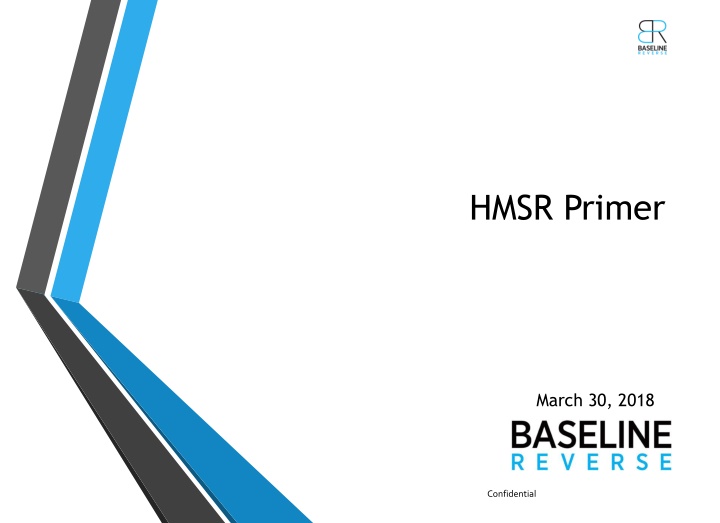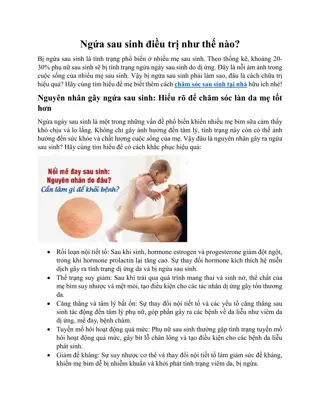The HECM Program Changes
Home Equity Conversion Mortgages (HECMs) help seniors aged 62+ access their home equity, eliminate monthly mortgage payments, and maintain ownership. Recent changes include financial assessments, PLF tables, and servicing requirements.
Download Presentation

Please find below an Image/Link to download the presentation.
The content on the website is provided AS IS for your information and personal use only. It may not be sold, licensed, or shared on other websites without obtaining consent from the author.If you encounter any issues during the download, it is possible that the publisher has removed the file from their server.
You are allowed to download the files provided on this website for personal or commercial use, subject to the condition that they are used lawfully. All files are the property of their respective owners.
The content on the website is provided AS IS for your information and personal use only. It may not be sold, licensed, or shared on other websites without obtaining consent from the author.
E N D
Presentation Transcript
HMSR Primer March 30, 2018 Confidential
The HECM Program Home Equity Conversion Mortgages ( HECMs ) are designed to help seniors aged 62+ HECM borrowers: - Have access a portion of their home equity - Eliminate their monthly mortgage payment - Maintain home ownership for as long as they pay their taxes, HOI, HOA, etc, regardless of loan balance - Can pay off their loan balance at any time, just like a traditional mortgage - Borrowers and their heirs are never responsible for negative equity Rates can be fixed (FRM) or floating (ARM) ARM Borrowers can chose from several payment plans - Tenure - equal monthly payments paid to borrower for life of loan - Term - equal monthly payments paid to borrower for fixed period selected by borrower - Line of Credit - open-ended line allowing borrowers to borrow and pay down balances any time - Modified Tenure - combination of Line of Credit and Tenure - Modified Term combination of Line of Credit and Term Confidential
Recent HECM Program Changes Mortgagee Letter 2014-21 "Initial Disbursement Limits" 2017 PLFs introduced (ML 2017-12) Mortgagee Letter 2013-28 "Financial Asseesment" NRMLA Ethics Advisory Opinion 2015-2 9/3/2013 6/27/2014 11/10/2014 10/30/2015 8/24/2017 8/29/2017 2014 PLFs introduced (ML 2014-12) Mortgagee Letter 2017-11 "Final Rule" - - - Financial assessment was introduced in ML 2013-28, requiring a limited credit underwrite for the first time The 2014 PLF tables were rolled out in ML 2014-12 for all case numbers assigned 8-4-2014 and later Mortgagee Letter 2014-21 introduced the concept of initial disbursement limits, only giving borrowers access to 60% of their principal limit in the first 12 months of a loans life - NRMLA issues Ethics Advisory Opinion 2015-02 in October 2015 to try to slow HECM to HECM refinance activity - Requires all HECMs to be at least 18 months seasoned before refinance - Mortgagee Letter 2017-11 implemented the Final Rule officially implementing servicing requirement changes for case numbers assigned on or after 9-19-2017 - Mortgagee Letter 2017-12 introduced the 2017 PLF tables - Floor rates dropped to 3% - Overall reduction of LTVs - Reduced ongoing MIP to 50bps from 125bps Confidential
HMSR Overview Reverse Mortgage Servicing Rights represent a company s contractual rights to service a loan in exchange for certain specific fees. HSMR owners are entitled to Retain a servicing strip when securitizing principal balances in HECMs Securitize all corporate advances in tail pools which typically trade at a premium Charge a stated monthly servicing fee directly to the borrower (not a popular option currently we don t see this often) HSMR owners are required to - - - - Advance MIP to FHA - Advance G-Fee to Ginnie Mae Fund scheduled payments to borrowers - - Fund borrower request for subsequent draws When a loan balance reaches 98% of the Max Claim Amount it must be bought out of all HMBS pools If active, the loan may be assigned to FHA, and the servicer suffers no losses If delinquent, the servicer must foreclose, manage and sell the REO, and file a claim with FHA to recover some of the losses Confidential
HMSR Valuation Approach Baseline models HMSRs at loan level, projecting prepay, draw, and delinquency rates using proprietary vectors derived from actual observed performance Prepay Speeds Bad: HPC ( HECM Prepay Curve ) applied uniformly Blas : Scaled HPC applied uniformly Baseline: Dynamic prepay vectors tuned for PLU, borrower age, number of borrowers, MCA, Expected rate, etc Draw Speeds Bad: HDC ( HECM Draw Curve ) applied uniformly Blas : 1.5% NPL in perpetuity Baseline: Dynamic draw vectors adjusted for PLU, borrower age, etc Confidential
Loan Level Performance We look for loan-level attributes that have historically proven to be good predictors of performance. When we can conceptualize why trends exist, we incorporate them into our cash flow model We find a few criteria are consistent predictors of loan performance: - Number of borrowers (shown to the left) - Borrower age - MCA - Initial Utilization - Expected Rate Confidential
Partial Prepays Generally the industry ignores partial prepays We find the following trends consistently show up in loan level performance - Some borrowers pay back a portion of their loan early in the life - Some borrowers will make regular monthly payments to keep interest accrual down Incorporating partial prepays tends to - Make interest shortfall losses more significant - Extend the life of a portfolio, adding to the fair value of the servicing strip - Increase total forecast subsequent borrower draws when modeled as a % NPL Confidential
AAG HMSR: Base Case Valuation Active Securitized Delinquent Securitized Buyout (Pre-Claim REO) Cashflow Stream Servicing Valuation MSR Future LLR PV $ PV % 2.16% 1.13% 2.05% -1.02% Cashflow Stream Servicing Valuation MSR Future LLR PV $ PV % -0.16% 0.38% 0.19% -0.73% Cashflow Stream Total Net Recoveries Subservicing Fee Delinquent Advances Delinquent Disposition PV $ PV % 87.09% -0.44% -1.12% 88.65% 150,820,748 79,322,565 143,110,993 -71,612,810 -578,191 1,335,925 664,996 -2,579,111 15,256,156 -77,725 -195,987 15,529,868 ` Only loans in statuses other than Active where HMBS balance >0 and servicer doesn t hold title to property Buyouts only valued if claim has not been filed Only loans in Active statuses Servicer will be responsible for advancing: - MIP - Gfee - Scheduled payments - Borrower draw requests Servicer will recover advances through tail pools as long as loans are projected to perform / remain active Servicer will be responsible for advancing: - HOI, HOA, Property taxes Servicer will be responsible for advancing: - MIP - Gfee - HOI, HOA, Property taxes Servicer recovers advances through REO sale and claims process Servicer recovers advances through REO sale and claims process This population has LTMCA = 89.89% Model returns ~12 points in property losses, ~1 point in unrecoverable advances and 44bps of subservicing expenses This population has LTMCA = 66.97%, so the Baseline model projects relatively high cure and /or PIF rates Confidential
AAG HMSR: Portfolio Summary AAG Origination profile LTMCA 0% 10% 20% 30% 40% 50% 60% 70% 80% 90% 100% 100%+ Total UPB Security 6,222,182 76,284,706 216,725,994 508,488,727 920,639,834 1,079,383,263 2,250,250,590 1,371,622,630 478,114,071 83,942,005 2,026,761 0 6,993,700,763 Delinquent 26,072 796,455 3,546,226 7,344,671 16,289,033 26,583,735 89,927,637 103,036,989 74,576,709 25,808,084 3,655,948 0 351,591,559 REO 0 0 0 0 32,961 172,395 149,574 2,380,282 3,615,522 3,254,968 6,227,155 1,685,583 17,518,442 No significant difference in AAG performance at portfolio level, though WALA 18-30 has performed slightly better Rate Reset Annual LIBOR Monthly LIBOR Fixed Security 3,415,129,829 2,415,879,596 1,162,691,338 Delinquent 84,195,209 199,959,619 67,436,732 REO 829,258 9,852,493 6,836,691 Confidential
AAG HMSR: Risks & Sensitivities Scenario Base Stress Magnitude Valuation 2.05% 1.58% 1.89% 1.44% 1.34% Fair Value ($MM) 150.9 116.3 139.2 106.0 98.7 Program Improvement Rising Rates* Higher DQ* Subservicing Fees* 40bs spread widening + prepay speed increase 50bps parallel shift Double delinquency rate double all fees *estimated from 10% sample Program Improvement assumes a swift change of direction in HECM policy - Scenario assumes prepay speeds increase on increased HECM to HECM refinance activity - Market spreads would increase to reflect shorter expected life of HMBS and derivatives Rising Rates assumes a +50bps parallel rate curve shock - HMSR values come under pressure as the expected life of the ARM portfolio shrinks - Higher rates lead to faster accruals, shortening the time to loan termination Higher DQ assumes a 2x increase in delinquency rates - Impacts include more loan losses, higher subservicing fees, and lower tail revenue Subservicing Fees assumes a 2x increase in subservicing fees - Active loan, delinquent loan, REO oversight, claim filing, and securitization fees all included Confidential
About Baseline Software - Web based pricing - Automated capital markets functions - Custom / white label tools Data - - Loan level performance Competitive intel Expertise - HMSR valuation - Whole loan valuation - Consulting - Hedge advisory services for new to reverse companies Confidential
APPENDIX Confidential
Tail Premium: History vs Forecast Confidential
HECM Origination Market HECM Mortgage Backed Security ( HMBS ) Issuers source loans from the following channels The top 5 HMBS issuers represent 86% of the market - The top issuer accounts for ~25% of market - March 2017 through Feb 2018 new production Confidential























